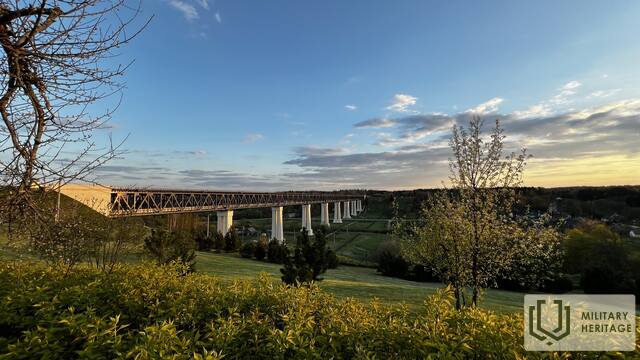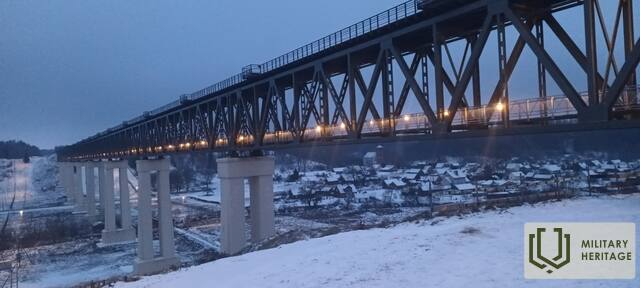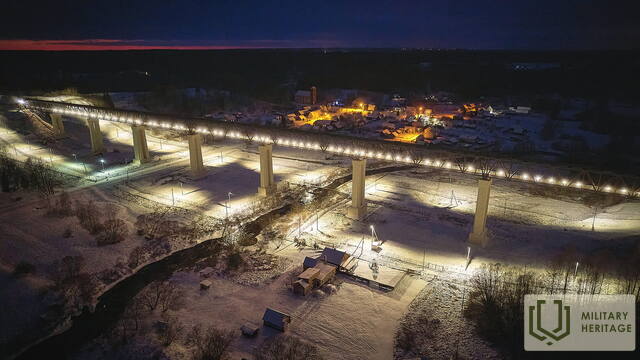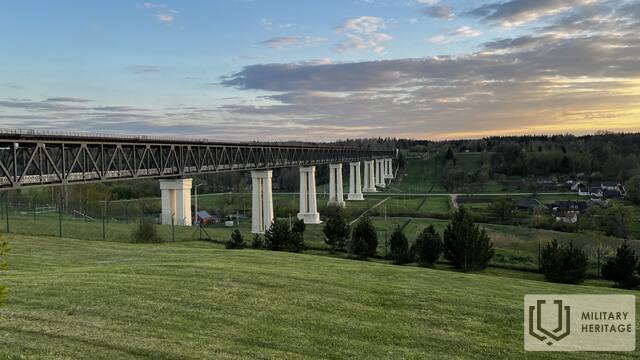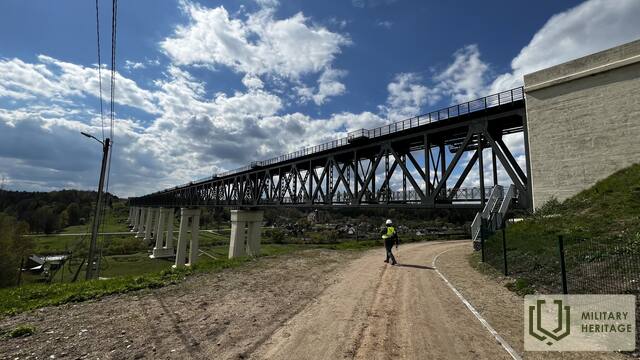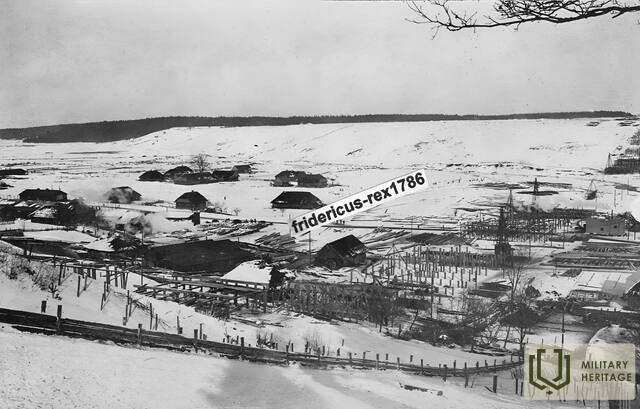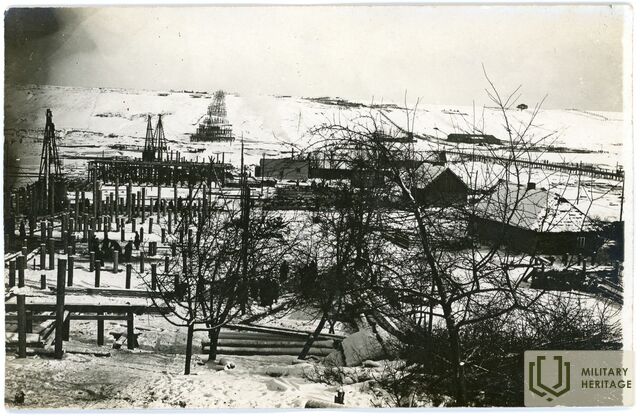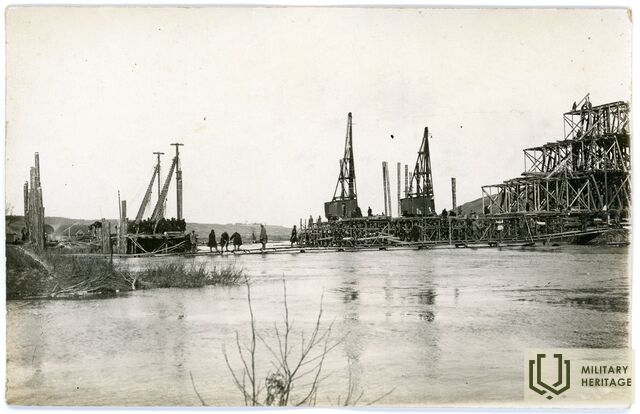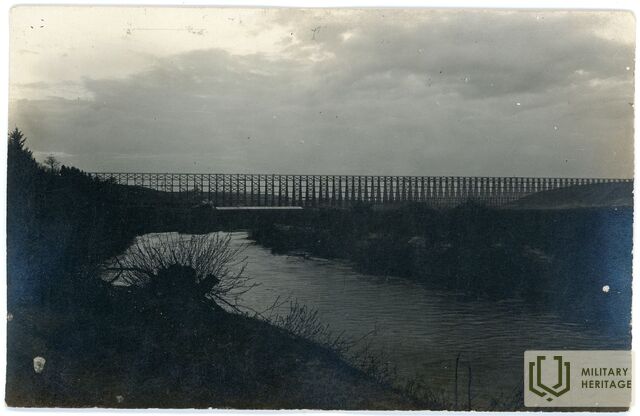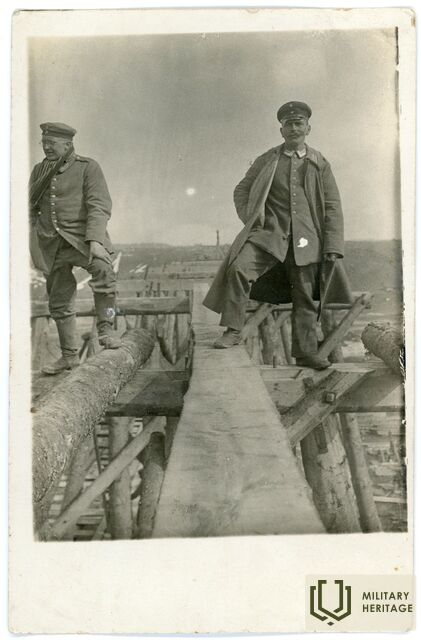Lyduvenai Railway Bridge Infrastructure

The bridge is located on kilometre 50.7 of the Radviliškis- Pagėgiai railway and crosses the Dubysa valley. It is the longest (599 m) and highest (42 m) railway bridge in Lithuania.
The first wooden Lyduvėnai Bridge was built by imperial Germany in 1916. Due to the threat of fire, the decision was made to rebuild the bridge, by replacing the wood with concrete and metal structures. The bridge was opened on 17 May 1918 and was named after Field Marshal Paul von Hindenburg, commander of the German Army.
After Lithuania regained its independence, the bridge was intensively used for both domestic transport and international transit. In 1937, three reinforced concrete fortifications were built to protect the bridge in the event of war (one of them remains to date).
Despite attempts to protect the bridge (it was bombed several times unsuccessfully), it was blown up by the retreating Nazi German troops on 26 July 1944. The Soviet Army quickly installed a temporary wooden bridge on new piers. In 1951, the restoration of the steel bridge on nine piers of two types began: six new piers were Russian-built, while three – German-built piers that have survived since 1918. The first train was launched over the restored bridge on 1 May 1952.
Since the end of 2023, after the last reconstruction of the bridge, tourist excursions have been organised along the bridge maintenance walkway, which is installed under the rails.




